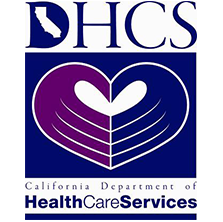PTSD Symptoms
Post Traumatic Stress Disorder affects men and women all over the world. PTSD is a psychiatric disorder that can occur after traumatic events and it often prevents people from living happy and fulfilling lives.
It has been documented that women are much more likely to display PTSD symptoms and suffer from the disorder. Of those women exposed to a traumatic event, 20 percent will exhibit PTSD symptoms and 30 percent of those women will develop chronic PTSD.
PTSD symptoms are abundant and can often be confused with other mental ailments. It is important to not hide the symptoms of Post Traumatic Stress Disorder or deny them in any way, for doing so can interfere with a person’s diagnosis.
What is Post Traumatic Stress Disorder?
PTSD was first recorded as Da Costa’s syndrome during the American Civil War and is often associated with military service. But it doesn’t only affect war veterans – it also affects civilian men, women, and children who have experienced particularly traumatic events.
PTSD occurs after a distressing event, like war, terrorism, torture, natural disasters, accidents, violence, or rape. Usually the disorder begins within three months of this experience, although the disorder can take years to appear in some cases. Common PTSD symptoms include extreme fear, depression and anxiety.
PTSD is caused by a traumatic event but there are also other things that can lead to a person being affected by PTSD. For example, the sufferer may have been predisposed to development of the disorder before their trauma occurred. Men and women with a history of drug or alcohol abuse, experiences of childhood physical abuse or neglect, or who have previously experienced sexual abuse, unwanted sexual contact, or rape are more likely to develop PTSD. It appears that these experiences can change the chemical balance of your brain, altering a person’s perceptions of fear and anxiety.
Some PTSD Symptoms
There are three categories of symptoms associated with the disorder: intrusion, avoidance, and hyperarousal symptoms.
1. Intrusion (re-experiencing the traumatic event): Intrusion symptoms arrive suddenly and occur when memories of the past event invade the life of a person who is suffering from PTSD. The most common intrusion symptom is the flashback. Flashbacks are vivid memories that can be triggered by sights, smells, or sounds, and cause you to relive the traumatic experience over and over again. These flashbacks can seem very real and are often detailed and filled with emotion. Another intrusion symptom is the nightmare, which can occur unexpectedly, causing extreme anxiety and fear.
2. Avoidance (emotional numbing): Avoidance symptoms describe a sufferer’s unconscious attempts to prevent remembering anything to do with the traumatic event. These signs of PTSD often interfere with family relationships, marriages, and careers. A person may avoid being with family and friends in order to hide their illness and they may also experience an overall feeling of numbness. The trauma survivor may alternate between feelings of intense emotion and simply no emotion at all. Consciously and unconsciously they will avoid reminders of the traumatic event or events in order to escape flashbacks. Depression is also as avoidance symptom.
3. Hyperarousal (increased arousal): Hyperarousal symptoms are the result of stimulated nerves and hormones. The PTSD sufferer may experience severe insomnia, trouble remembering the entire traumatic event, and difficulty concentrating. They may also experience irritability or explosions of emotion for no apparent reason and more frequent startling responses.
In addition to intrusion, avoidance and hyperarousal, PTSD symptoms can include physical symptoms. Not uncommon are headaches, stomach problems, dizziness, and chest pain, along with nausea, diarrhea, skin problems, rapid heartbeat, and high blood pressure.
Different Types of PTSD
There are four types of PTSD and all of them involved the same PTSD symptoms. The only difference is the length of time by which a person’s PTSD symptoms have become observable.
The four different types of PTSD are:
1. Acute Stress Disorder: Acute stress disorder is diagnosed when symptoms occur within four weeks of the traumatic event and last for more than 2 days, but less than 4 weeks.
2. Acute Post Traumatic Stress Disorder: Acute PTSD is diagnosed when symptoms last for more than four weeks.
3. Delayed Onset Post Traumatic Stress Disorder: This form of PTSD may not appear until years after the initial traumatic experience.
4. Chronic Post Traumatic Stress Disorder: This form of PTSD is diagnosed when symptoms last for more than 90 days. A person will likely experience lapses in PTSD symptoms for a number of days or weeks in a row, but your PTSD symptoms will always return.
If not dealt with properly and effectively, PTSD can cause major problems in a person’s life. It’s common that PTSD can cause other psychiatric problems including major depression, panic disorder, obsessive-compulsive disorder, eating disorders, and agoraphobia. PTSD also often leads to substance abuse problems, including alcohol and drug abuse.
The good news is that there are effective treatments for PTSD at Safe Harbor Treatment Center for Women. At Safe Harbor’s Capella, we specialize in comprehensive treatment for women struggling with trauma and addiction. Capella is dedicated to providing women with a safe, loving, and affordable environment in which to heal the mind, body and spirit. Too often, women start on the path of recovery, but stop due to unresolved trauma. Capella will provide a holistic integrative program for emotional trauma to support women through the healing process around these issues.



